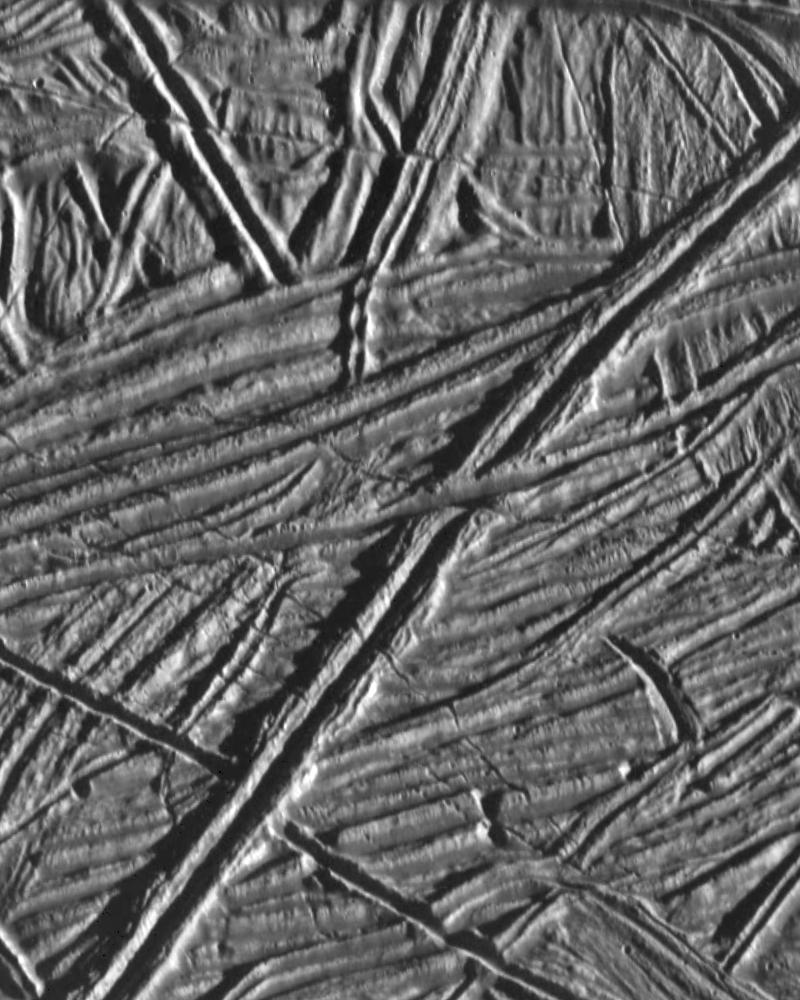All Resources
Europa Under Stress

This high resolution image of the icy plains on Europa shows multiple sets of crosscutting ridges.
Many of these ridges are cut by younger fractures. Fractures that display relative motion are known as faults; several faults showing horizontal motion, like the San Andreas Fault in California, are seen here.
Faults and ridges give planetary geologists clues to the stresses within the crust at the time of formation. Ridges typically form as a result of compression. The orientation of the compressive stress is perpendicular to the strike (long axis) of the ridge. In contrast, fractures form as a result of tensional stresses that crack the brittle crust. These features indicate that the surface of Europa has experienced repeated episodes of tension and compression throughout its history.
This image is approximately 7 miles (12 kilometers) by 9 miles (15 kilometers) across, centered near 15N, 273W.
The Galileo spacecraft obtained this image on February 20, 1997 during its sixth orbit of Jupiter from a distance of 2000 kilometers 1,240 miles (2,000 kilometers). North is toward the top of the image, with the sun illuminating the surface from the right.


